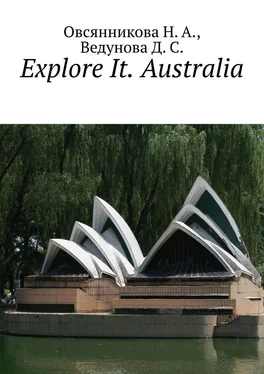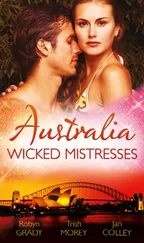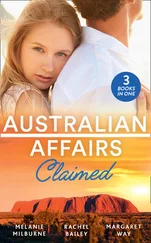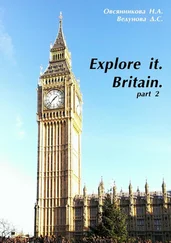Д. Ведунова - Explore It. Australia
Здесь есть возможность читать онлайн «Д. Ведунова - Explore It. Australia» — ознакомительный отрывок электронной книги совершенно бесплатно, а после прочтения отрывка купить полную версию. В некоторых случаях можно слушать аудио, скачать через торрент в формате fb2 и присутствует краткое содержание. ISBN: , Жанр: Языкознание, на английском языке. Описание произведения, (предисловие) а так же отзывы посетителей доступны на портале библиотеки ЛибКат.
- Название:Explore It. Australia
- Автор:
- Жанр:
- Год:неизвестен
- ISBN:9785005142566
- Рейтинг книги:3 / 5. Голосов: 1
-
Избранное:Добавить в избранное
- Отзывы:
-
Ваша оценка:
- 60
- 1
- 2
- 3
- 4
- 5
Explore It. Australia: краткое содержание, описание и аннотация
Предлагаем к чтению аннотацию, описание, краткое содержание или предисловие (зависит от того, что написал сам автор книги «Explore It. Australia»). Если вы не нашли необходимую информацию о книге — напишите в комментариях, мы постараемся отыскать её.
Explore It. Australia — читать онлайн ознакомительный отрывок
Ниже представлен текст книги, разбитый по страницам. Система сохранения места последней прочитанной страницы, позволяет с удобством читать онлайн бесплатно книгу «Explore It. Australia», без необходимости каждый раз заново искать на чём Вы остановились. Поставьте закладку, и сможете в любой момент перейти на страницу, на которой закончили чтение.
Интервал:
Закладка:
Federation
On January 1, 1901, after ten years of preparation, the Australian colonies united to form the Commonwealth of Australia, the dominion of the British Empire.
In 1911, the Federal Capital Territory (Australian Capital Territory since 1938) was cut off from New South Wales and construction began on the future new capital, Canberra. From 1901 to 1927, Melbourne was the capital of the Union. In the same year 1911, the Northern Territory was transferred from the control of the state of South Australia to federal administration. (Between 1927 and 1931, it was divided into the territories of Northern and Central Australia). In addition, between the world wars, Australia received from Great Britain some territories that were previously directly subordinate to London: Norfolk Island (1914), Ashmore and Cartier Islands (1931) and claims to the Australian Antarctic Territory (1933).
Australia, due to its strong dependence on exports (the main export products were grain and wool), was significantly affected by the global economic crisis. In 1932, the unemployment rate reached a record high of 29%.
Under the 1931 Westminster Statute, which Australia only ratified in 1942, it became de facto independent from Great Britain. The British king remained the head of state.
After World War II, the Australian government began a massive program to welcome immigrants from Europe. It was believed that the country narrowly escaped the Japanese invasion, and in order to avoid similar problems in the future, measures should be taken to ensure that its population was increased. In addition to traditional migrants from the British Isles, people from Central and Southern Europe moved to Australia in large numbers for the first time in its history. A thriving economy that has attracted migrants from war-torn Europe has allowed the government to open numerous programs to employ newcomers. Between 1948 and 1975, two million immigrants arrived in Australia.
In 1986, with the passage of the 1986 Australian Act, all constitutional ties between Australia and Great Britain ended, although the Queen of Great Britain still formally remains the head of state of Australia. In 1999, a referendum was held on the establishment of a republic, but this proposal was rejected by a small majority (55%) of the vote. Since the election of Prime Minister Gough Whitlam in 1972, the main thrust of Australia’s modern foreign policy has been to establish and develop ties with its Asia-Pacific neighbours, while maintaining close ties with Australia’s traditional allies and trading partners.
Government and politics
The Government of Australia is a system of institutions and organizations defined by the constitution and designed to provide governance of the political, economic, and cultural life of Australia. The Australian Government is based on two basic principles: the principle of federalism and the principle of separation of powers. The constitution divides the Australian government into three branches: legislative, executive, and legal.
The Constitution of Australia defines the federal legislature of the country – the Federal Parliament or the Federal Parliament. Parliament includes the Monarch of Australia, the Senate and the House of Representatives. According to the constitution, the federal government is given legislative rights at the state level, as well as the rights and responsibilities to enforce federal law. All other duties and rights remain with the governments of the six colonies that entered the federation at the time of its formation in 1901. According to the constitution, these colonies became the states of the Commonwealth of Australia. Each state has its own constitution and parliament, so Australia has seven independent parliaments, none of which can interfere in the affairs of the other. The Australian Supreme Court, as the legal branch of government, is charged with resolving disputes arising between the federation and the states, as well as between individual states.
The Federal Parliament has the right to make proposals for constitutional amendments. In order for these changes to acquire the force of law, it is necessary to pass them through a national referendum, at which they must receive a “double majority”:
– majority of votes, and
– majority of votes in most states.
The country’s constitution allows states to delegate some of their powers to the federal government. This can be achieved by amending the constitution through a referendum. The most common way of transferring authority is through a law that approves the transfer, and that law must be approved by all state governments involved in this transfer of authority. The transfer of powers, formalized in this way, can have a certain period of validity, after which the powers of the parties return to their previous state.
In addition to the states, Australia has a number of territories, three of which, the Australian Capital Territory, the Northern Territory and Norfolk Island, have self-government rights. These Territories have statutory rights granted to them by the federal government, and the Australian Parliament reserves the right to revoke these rights and repeal bills passed by the Territories as necessary. In addition, Australian citizens residing in the Australian Capital Territory and the Northern Territory have their representation in the Australian Parliament, while Norfolk Island residents do not.
The rest of Australia’s territories, which have a permanent population, do not have the right to self-government, these territories use federal laws, although there are local governments on Christmas Island and the Cocos Islands.
The principles of federal structure and the structure of the Australian parliament were the subject of much debate at the time of writing the country’s constitution. The House of Representatives is elected on the basis that the states that make up the Australian Federation have different populations. New South Wales, for example, has 50 seats in the lower house of parliament, while Tasmania has only 5. In contrast to the lower house, the Senate is elected by equal representation from all states, all of which are represented in the upper house by 12 senators. Such a system was chosen in order to prevent the two most populous states of the country, New South Wales and Victoria, from any advantage over other members of the federation due to the fact that if the lower house passes any law that can be regarded as an advantage for the two states, the upper house could block it by most of the smaller states.
The third tier of government, after the Australian federal government, state and territory governments, is the local government in the form of city and suburban councils. These institutions are responsible for issues such as maintaining local roads, libraries, garbage collection, animal registration, etc. Council members are elected in local elections and usually perform their duties in combination.
According to the Australian Constitution, the country is a federal state with a constitutional monarchical form of government. Politics in the country is carried out within the framework of parliamentary democracy. The Monarch of Great Britain is the monarch of Australia, and his authority in the country is represented by the Governor General. The power of the monarch in the territory of individual states and territories that make up the country is represented by governors and administrators. However, the monarchy in Australia is primarily of ceremonial and historical significance. At its core, Australia’s political system is a parliamentary democracy. The people of the country elect the legislatures of each territory and state that make up the federation, as well as the bicameral Australian federal parliament, which is a hybrid of the UK parliament, operating on the basis of the Westminster tradition, as well as elements of the unique Australian federal practice.
Читать дальшеИнтервал:
Закладка:
Похожие книги на «Explore It. Australia»
Представляем Вашему вниманию похожие книги на «Explore It. Australia» списком для выбора. Мы отобрали схожую по названию и смыслу литературу в надежде предоставить читателям больше вариантов отыскать новые, интересные, ещё непрочитанные произведения.
Обсуждение, отзывы о книге «Explore It. Australia» и просто собственные мнения читателей. Оставьте ваши комментарии, напишите, что Вы думаете о произведении, его смысле или главных героях. Укажите что конкретно понравилось, а что нет, и почему Вы так считаете.












